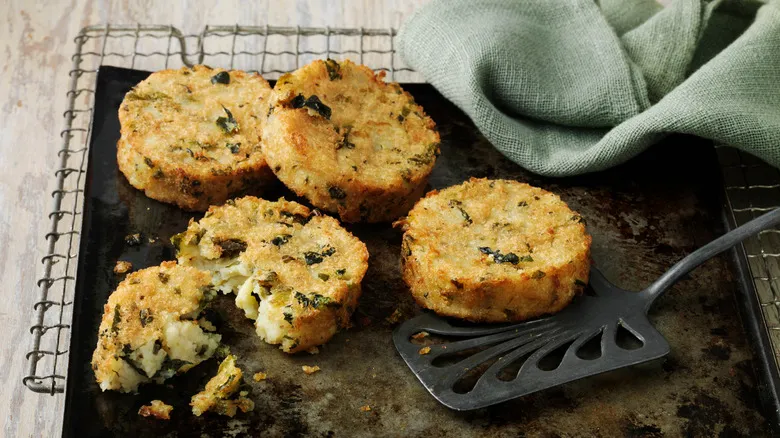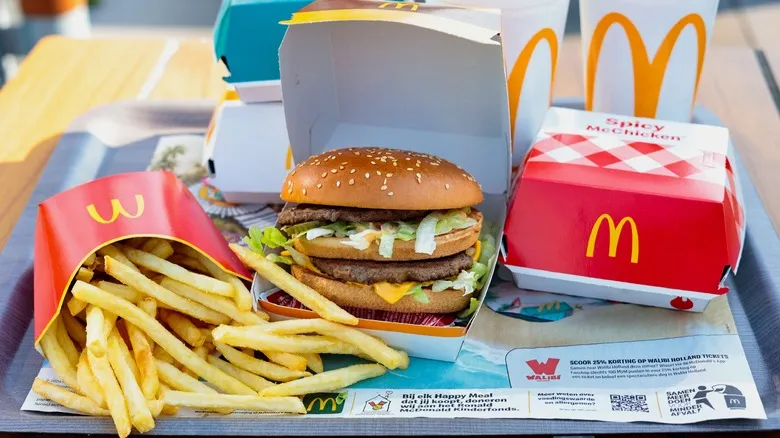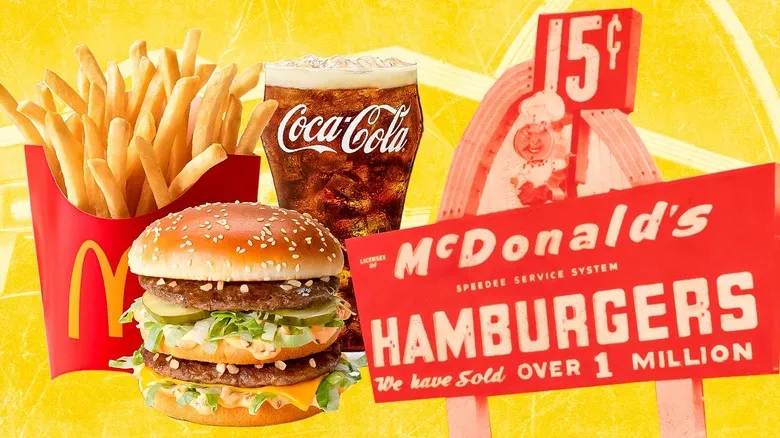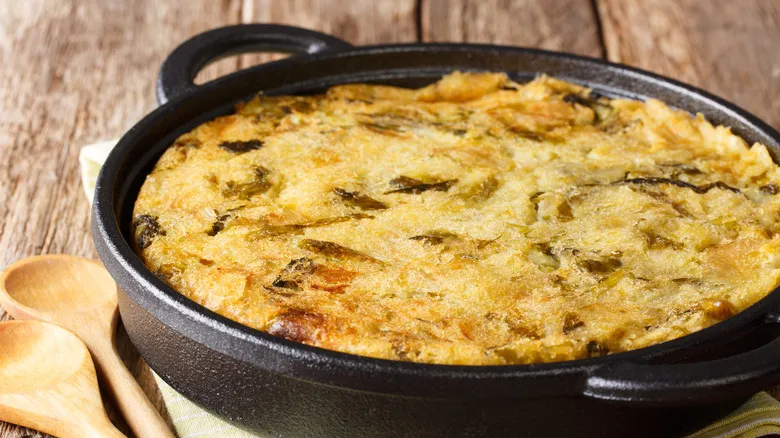Bubble and squeak is a smashing way to use leftover vegetables

Bubble and squeak is regarded as one of the classic peasant dishes of Britain. The essence of this dish lies in maximizing the use of available food and minimizing waste. Consequently, it is a versatile dish with no fixed recipe, allowing for the use of any leftovers you may have.
The two key ingredients now recognized as essential for bubble and squeak are potatoes (either mashed or chopped) and either cabbage or Brussels sprouts. Beyond these, the possibilities are endless. Carrots are a favored addition, adding both texture and color, while onions and garlic are also popular, as they enhance the flavor of nearly any dish. It's not uncommon to find ingredients like broccoli and peas included as well. You can even incorporate meats such as bacon or ham and top it off with a fried egg, transforming bubble and squeak from a side dish into a complete meal.
While you can simply toss the mixture of potatoes and vegetables into a hot pan to cook, it's quite common to first shape the mixture into patties and fry them in butter or oil. This method is a traditional way of preparing bubble and squeak in Britain, though it bears little resemblance to the dish's original form, which leads us to its history and the intriguing origin of its name.
The origin of bubble and squeak, and how it got its name

Bubble and squeak has its origins in the 18th century, but the earliest iterations of the dish were quite different from the version we recognize today. The fundamental idea has always been to utilize leftovers effectively. However, initial recipes for bubble and squeak emphasized meat over vegetables. One of the earliest documented recipes appeared in 1810 in "A New System of Domestic Cookery" by Maria Eliza Ketelby, which called for cabbage and sliced beef, omitting potatoes entirely. The contemporary potato-based variant of bubble and squeak emerged during World War II, when rationing restricted access to meat.
Naturally, discussing bubble and squeak wouldn't be complete without mentioning its intriguing name. The evocative title refers to the sounds produced in the frying pan while cooking this dish. Cabbage contains over 90% water, and as it heats up, the moisture is released and evaporates, creating small bubbles that squeak as they burst.
Bubble and squeak shares a close relationship with a few other dishes that also boast memorable names. Colcannon, a beloved St. Patrick's Day staple in Ireland, is nearly identical to bubble and squeak. In Scotland, a similar dish is prepared that includes turnips and cheese, known by the delightful name of rumbledethumps, which also deserves a place among the great food names.
Recommended

How The Chicago-Style Hot Dog Was Born

The Reason McDonald's Hot Dogs Were Probably Never Going To Last

In The 1950s You Could Buy McDonald's Entire Menu For Under $2

The Extravagant Details Behind Prince Harry And Meghan Markle's Wedding Cake
Next up

